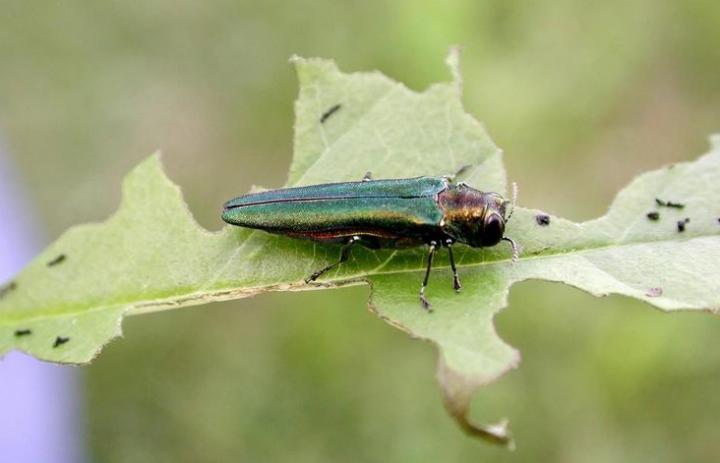Invasive insects will kill 1.4 million US street trees by 2050, study warns
Neighbourhoods in New York, Chicago, and Milwaukee will be hotspots, study says

Invasive insects will kill nearly 1.4 million street trees in the US over the next 30 years, costing over $900m to replace, according to a new study that could help urban policymakers know the species at the greatest risk in different areas of the country.
The research, published on Monday in the British Ecological Society’s Journal of Applied Ecology,made the first country-wide forecast of street-tree mortality from invasive insects, using data from about 30,000 urban areas across the US.
The East Asian wood-boring beetle – also known as the Emerald ash borer (Agrilus planipennis) – may cause 90 per cent of the 1.4 million tree deaths and virtually kill all ash trees in more than 6,000 urban areas, according to the study.
Researchers, including those from the US Forest Service, said the impact will not be evenly spread across the country, with less than a quarter of US communities set to experience 95 per cent of all street-tree mortality from invasive insects.
Neighbourhoods in New York, Chicago and Milwaukee would likely be hotspots, according to the study.
These areas, scientists said, have very high numbers of ash trees and are in the recent or near-future path of the emerald ash borer and large human populations are also predicted to increase the influx of invasive insects to an area.
Insect species, including Asian wood boring insects like the citrus longhorned beetle that have not yet arrived in the US, are also predicted to pose the highest threat in the future.
The insects could potentially cost $4.9bn dollars over the next 30 years.
“These results can hopefully provide a cautionary tale against planting a single species of tree throughout entire cities, as has been done with ash trees in North America,” Emma Hudgins at McGill University and lead author of the research said in a statement.
“Increasing urban tree diversity provides resilience against pest infestations. While we know this more intuitively for monocultures of crops, many cities continue to plant what are essentially monoculture urban forests,” Dr Hudgins said.
Trees in urban environments provide a host of benefits such as improving air quality, cooling streets, carbon capture, habitat provision for wildlife as well as improving citizens’ mental and physical health.
In the study, scientists combined a series of four models, including those of street tree populations in 30,000 communities, the predicted spread of 57 invasive insect species, how deadly these insects are to different tree species and the cost of removing and replacing dead trees.
Scientists said a combination of factors including trade, travel and other human activities expose these trees to higher numbers of invasive species and create conducive conditions for invasive species to easily spread.
“Urban trees do a variety of wonderful things – they keep cities cool, they take the sting out of heavy downpours, they are good for biodiversity and they even make people happier,” Jane Memmott at the University of Bristol, who was not involved in the study, said.
“This paper shows that unless we plant a variety of tree species in our cities, urban trees are seriously at risk from invasive pests. The take-home message to urban planners, is to plant multiple species in cities rather than focus on just a few familiar species; It’ll keep trees wonderful, and it will keep them in our cities,” Dr Memmott added.
Subscribe to Independent Premium to bookmark this article
Want to bookmark your favourite articles and stories to read or reference later? Start your Independent Premium subscription today.

Join our commenting forum
Join thought-provoking conversations, follow other Independent readers and see their replies